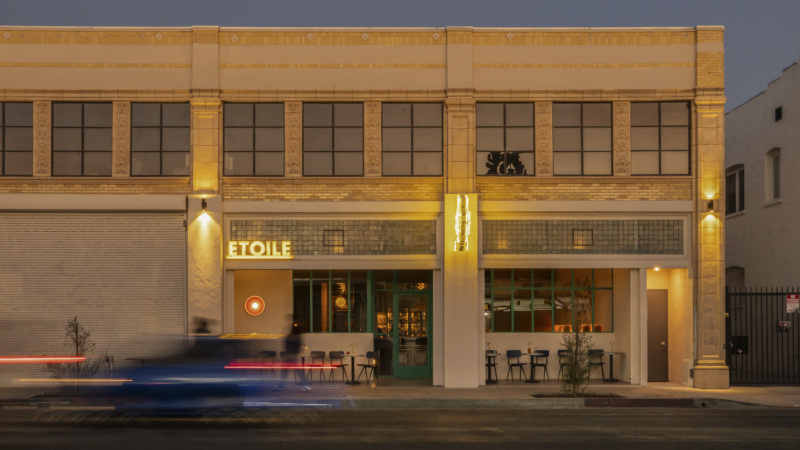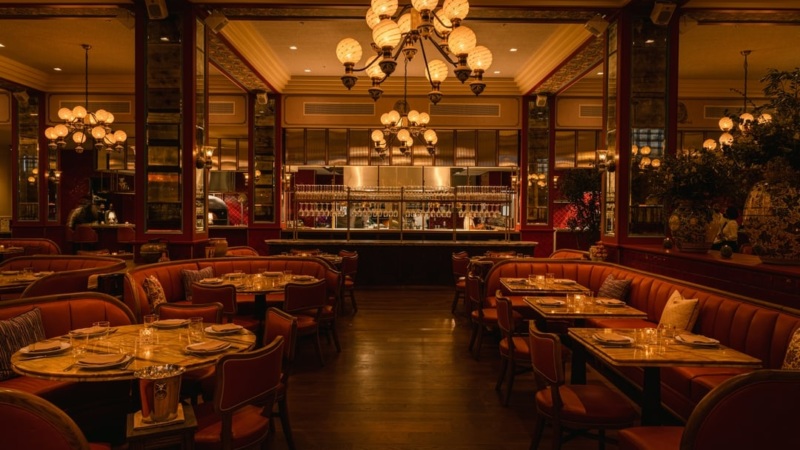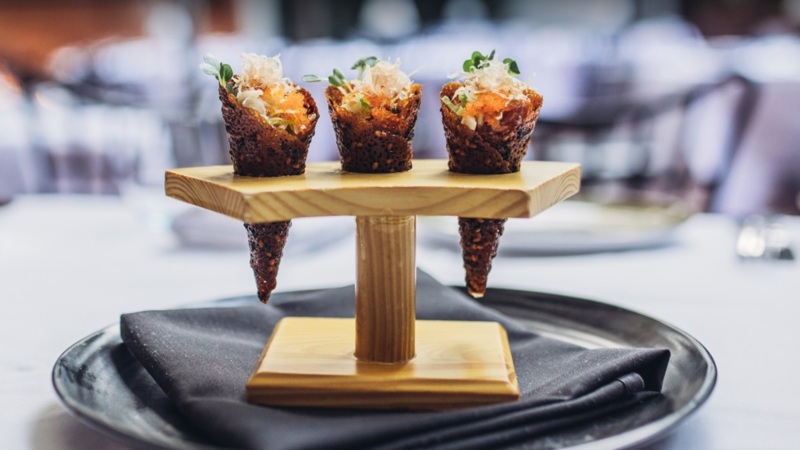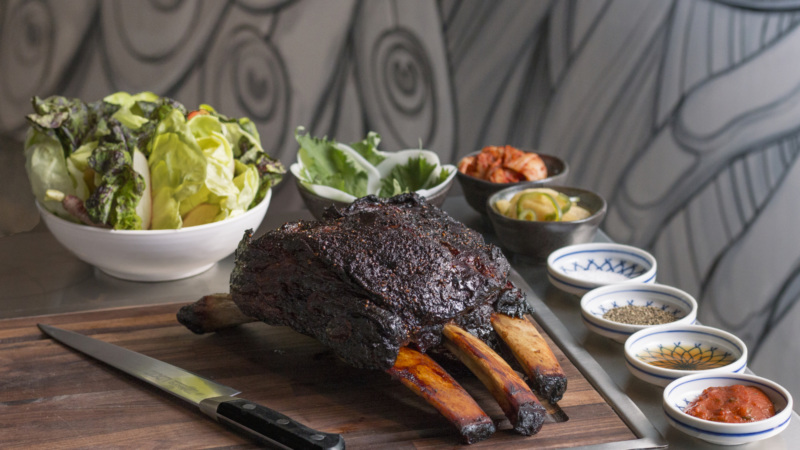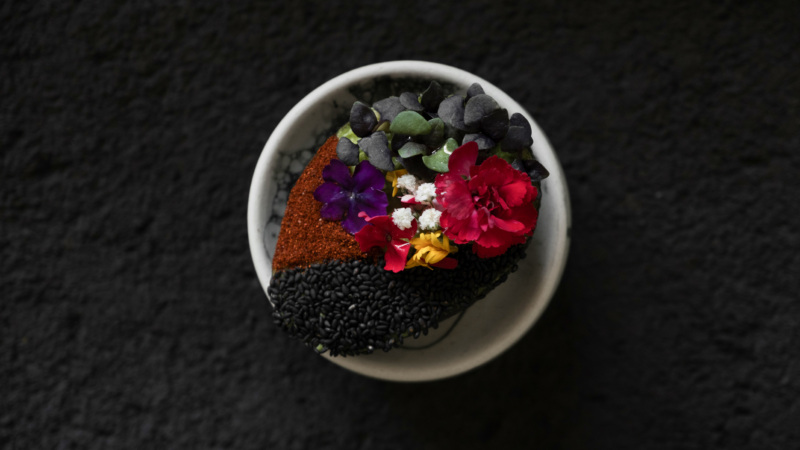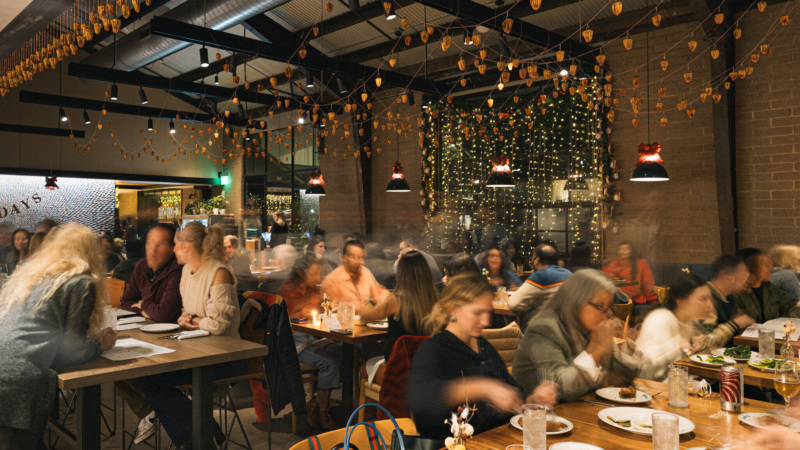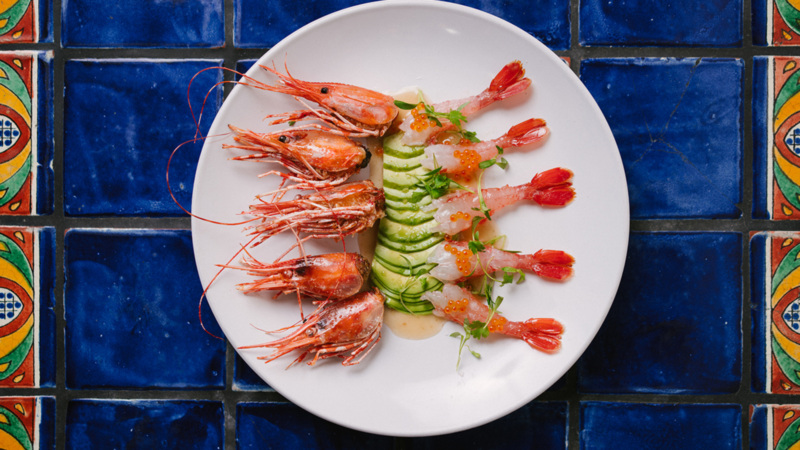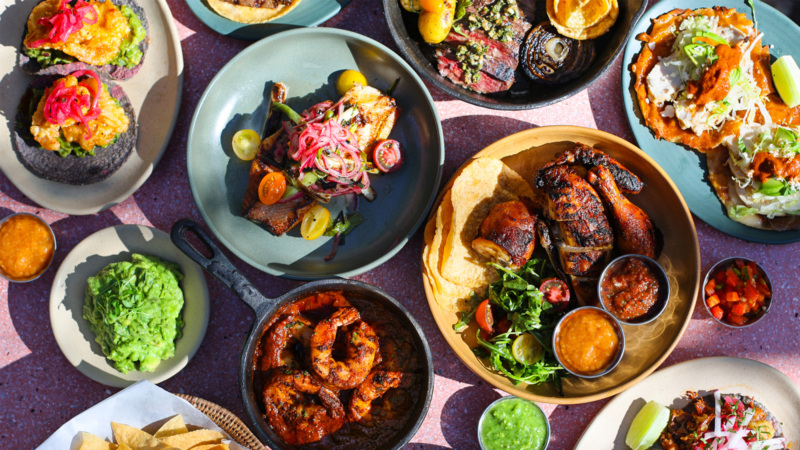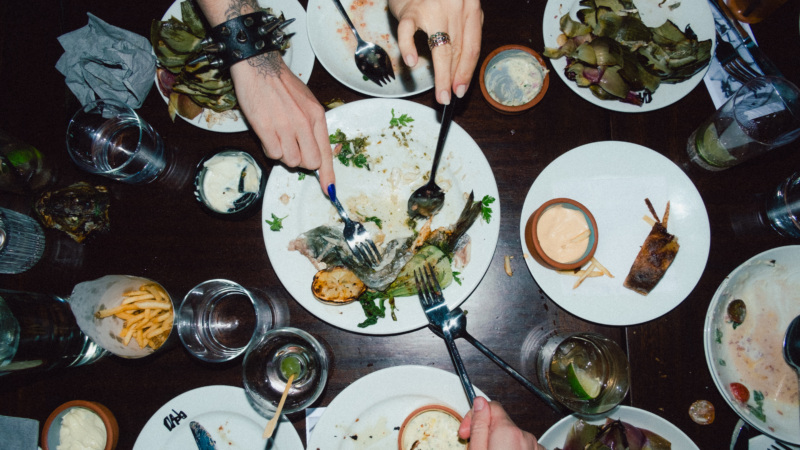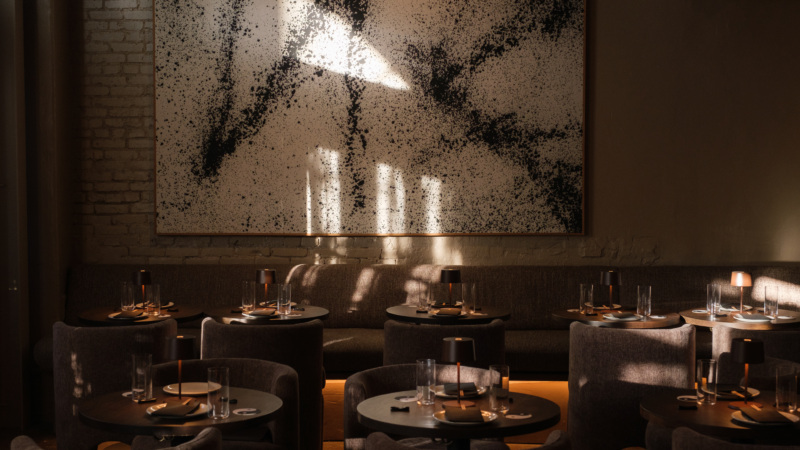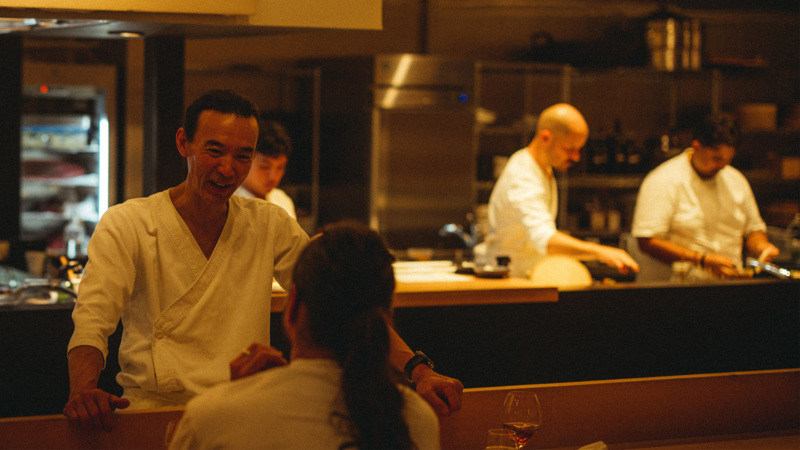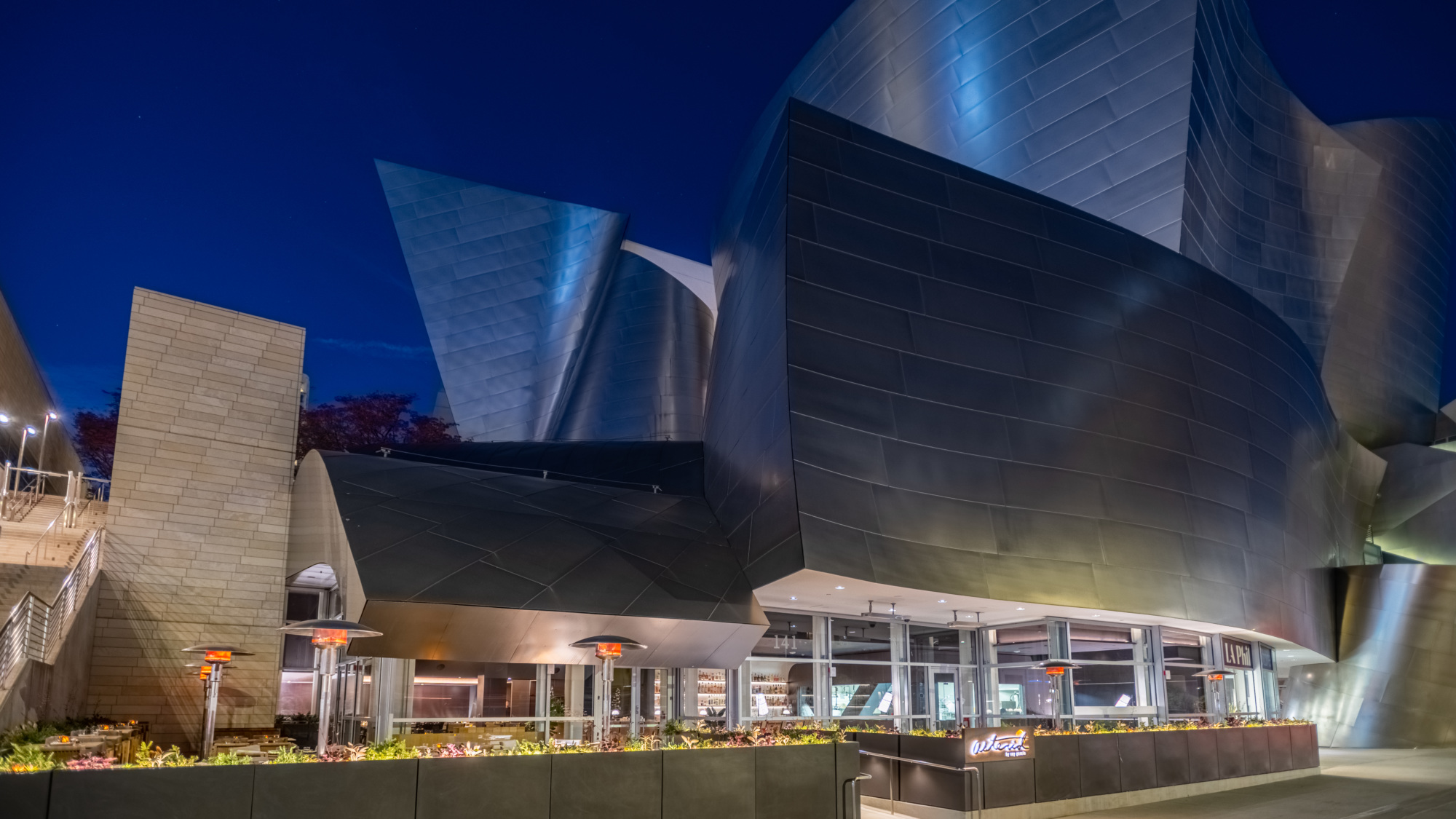
Everything You Need to Know About Ray Garcia’s Asterid
For some chefs, taking over a legacy restaurant at one of L.A.’s most iconic cultural destinations is a task too daunting to dare attempt. For Ray Garcia, it’s just another day at work. The chef, who in recent years closed his beloved restaurant Broken Spanish, debuted a restaurant in Las Vegas, and oversaw an incredibly popular pop-up, is ready for his next chapter with Asterid (they prefer a lowercase A) in the Walt Disney Concert Hall on Grand Avenue in Downtown.
When the concert hall debuted in 2003, Joachim Splichal’s longstanding Hollywood restaurant Patina moved in to anchor the ground floor. It was a big deal at the time, and an even bigger deal when it closed during the pandemic. Now, with concerts taking place in the stunning venue once again, Asterid is there to greet guests, whether they’re there for a performance or just to admire the silvery curves and gleaming angles of the Frank Gehry-designed building.
Not only will Asterid serve as the concert hall’s main restaurant and bar, it’s another draw for DTLA’s cultural hub, only steps from The Broad and MOCA, and a few blocks from The Music Center and Grand Park. And with The Conrad opening across the street, bringing three new restaurants from José Andrés ThinkFoodGroup, and Otium on the same block, Grand Avenue is, well, grand again. Before you stop by Asterid, here’s everything you need to know before you go.
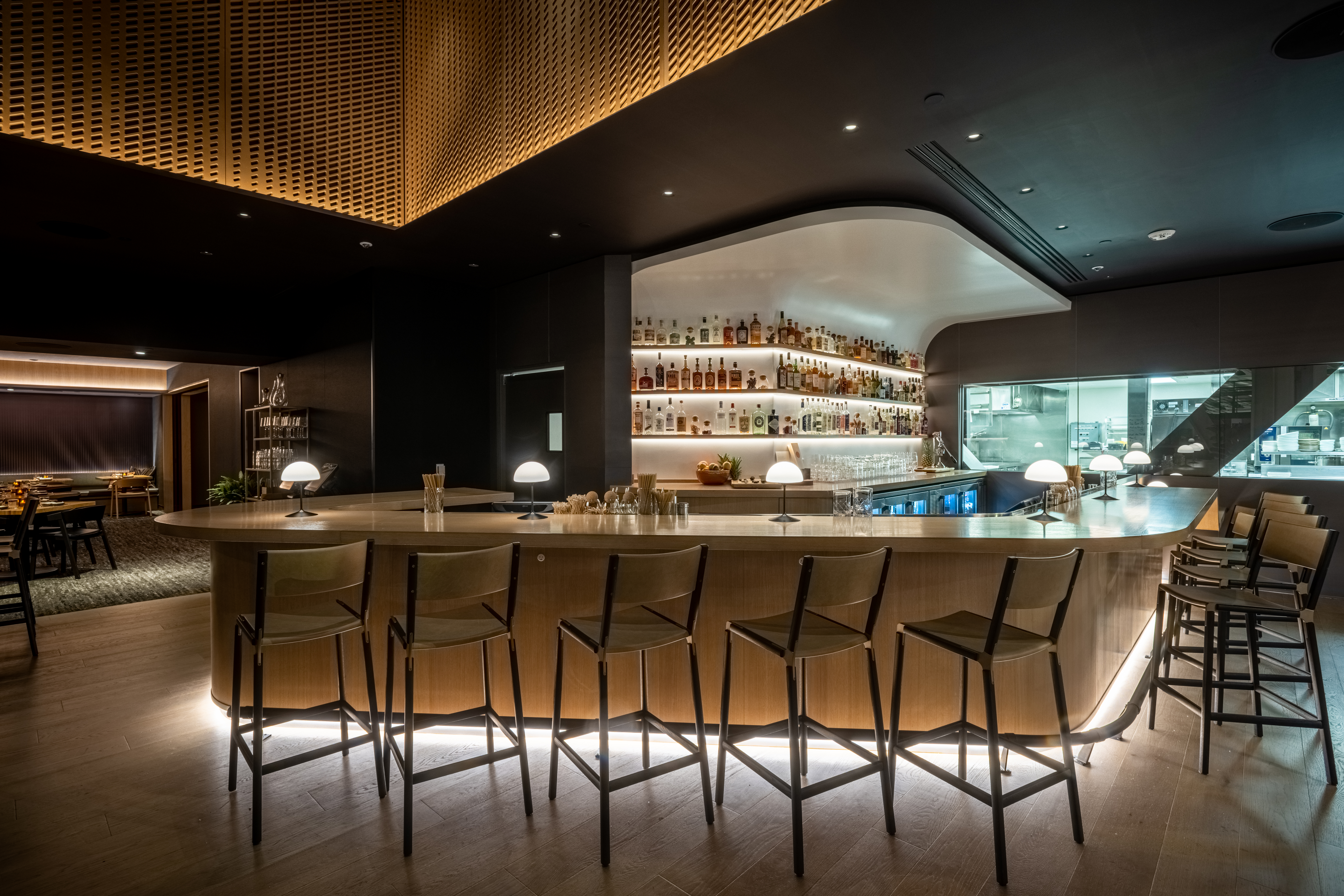
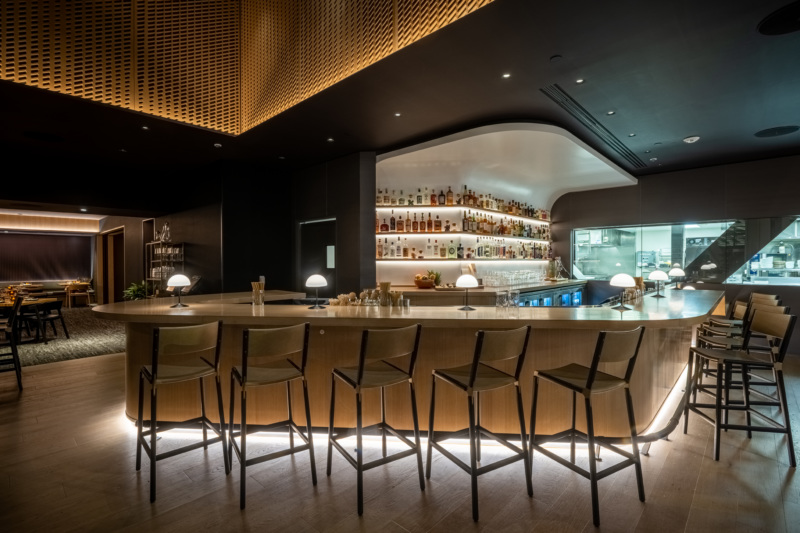
1. Expect a grand entrance.
Patina was posh, but Asterid brings an entirely new energy to the landmark space. (When the surroundings are this dazzling, the restaurant within had better make a statement). Thanks to Belzberg Architects, Garcia has answered the call with a sleek, contemporary design and warm and familiar feel.
With a bigger entrance, expanded bar space, and floor-to-ceiling windows, he says the dining room doesn’t feel as cloistered as before. It’s a little dark and sultry, with illuminated walls and a glowing backlit bar, and the two spaces flow easily into each other for a more communal atmosphere. The tables are bare except for flickering candles — no fine-dining linens here. The idea is to appeal to both informal and special occasion diners, looking to stop by for everything from a celebratory pre-show meal to an after-dinner nightcap. (There’s also a small private dining room for those seeking more intimacy.)
“With Patina, that generation of restaurant was built to feel exclusive,” Garcia says. “The walls were meant to captivate people, but to me it lacked energy. I felt like I was eating in a museum. I wanted a space with a sexy, adult feel.”
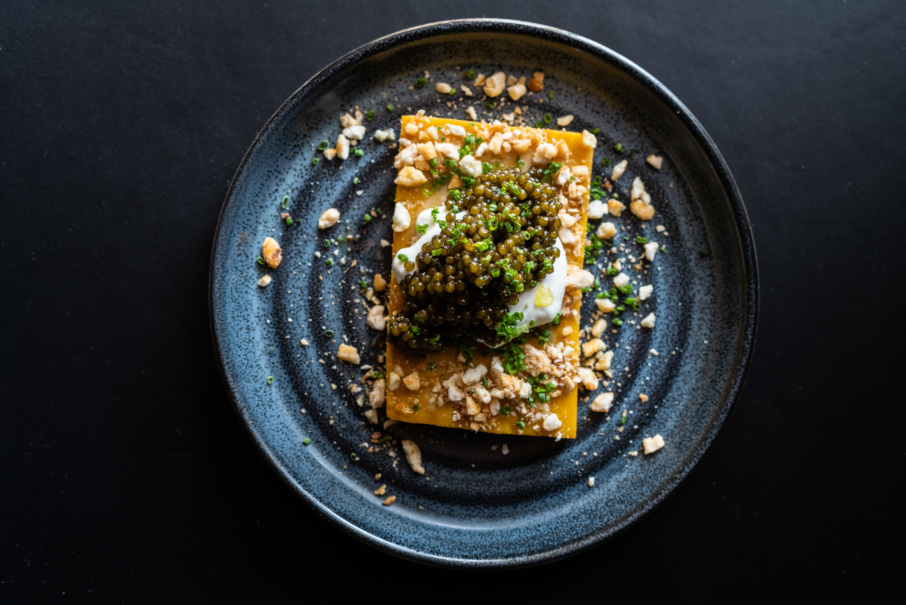
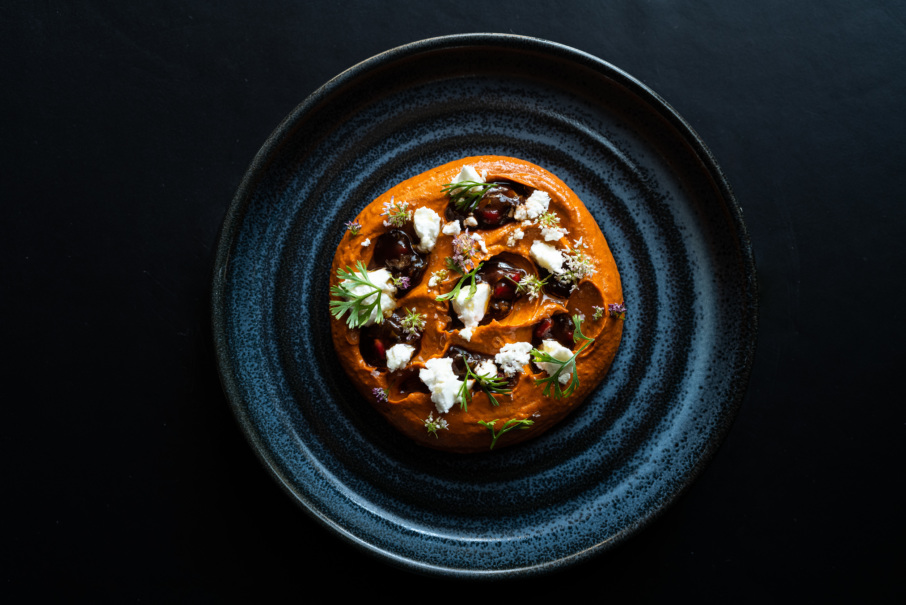
2. If it ain’t broke(n) …
The first thing to know about the menu is that it isn’t Broken Spanish redux. There are hints here and there, Garcia says, but the Asterid menu is more an evolution of his cooking. It’s still vibrant and hyper-seasonal, but now, Garcia is expanding beyond Alta California cuisine and his Mexican roots.
“Visually we have The Broad, the performing arts, and so much art and culture that we want to represent that on the plates,” says Garcia. “I get to use ingredients I couldn’t before, like great cheeses, yogurts. Truffles. Caviar! We put it on a squash tamal with beurre de Baratte and crema. There are black truffles on our steak tartare.”
Other highlights from the opening menus include sunchoke rosti with creme fraiche and strawberry-pepper jam; red beet risotto with dill; maitake mushrooms with turmeric and parsley; and lamb shank with charred eggplant puree, warm flatbread, and pickled chiles. For dessert, look for a hibiscus-flavored angel food cake with vanilla cream and Harry’s Berries strawberries.
“Everything is meant to be just as comfortable for solo diners at the bar as it is for six people coming in and sharing plates,” Garcia says. “It’s the opposite of a tasting menu. It’s all a la carte. If you have an hour, here are a few fun bites. For happy hour, there’s this. You’re coming after work for a drink? We have that, too.”
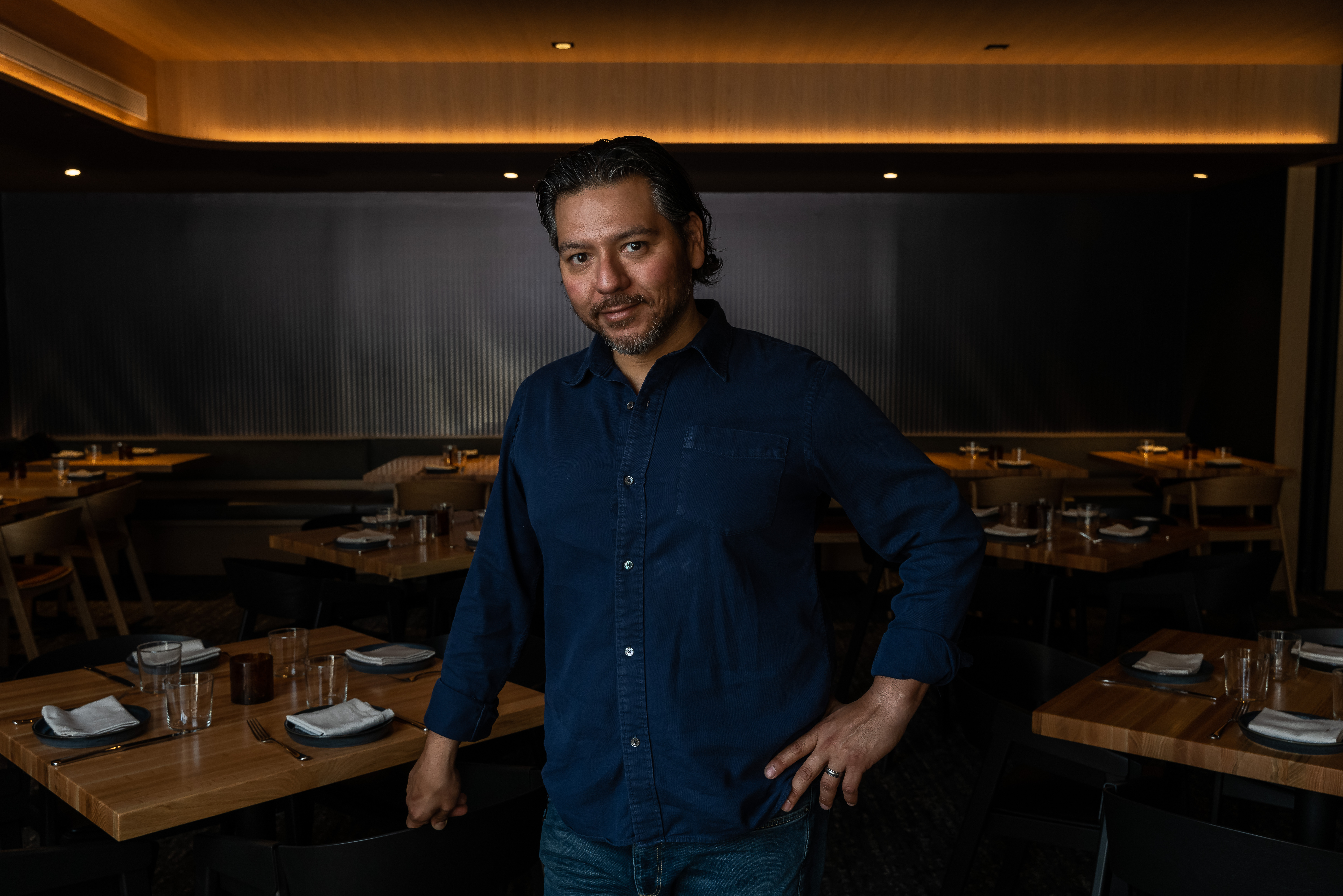
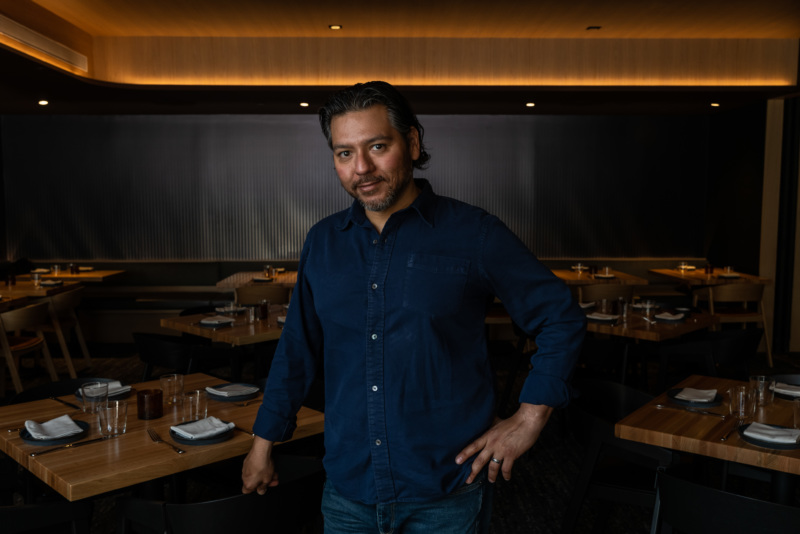
3. On a grand scale, but it’s still personal.
The name Asterid refers to a group of flowering plants that range from colorful vegetables to fragrant herbs and radiant florals. Garcia chose it because he has an affinity for cooking with things in that family, like kale, eggplant, blueberries, and tomatoes, especially if they’re native to California. Like all of his projects, there’s a personal narrative as the throughline. “These are things I’ve always used in the kitchen,” Garcia says. “I didn’t want it to be kitschy, but indicative from the way I use them. It’s really me. Even the logo is literally my handwriting.”
4. Cocktails take center stage.
There’s showmanship in every cocktail created by former Broken Spanish bar director Chris Chernoc. The menu revolves around reimagined classics, some featuring locally crafted spirits (The Spirit Guild in the Arts District among them), along with zero-proof offerings, locally brewed beers, and wines by the bottle and glass.
Hits so far (the menu will continue to grow) include a bright Tequila and passion fruit number with hibiscus and falernum (“It goes down way too easy,” says Garcia); a newfangled daiquiri; and non-alcoholic coconut punch with Lyre’s cane spirit, black tea, pineapple, and baking spices. Once brunch starts, a vodka, chile, carrot, and orange cocktail might just replace the ubiquitous Bloody Mary. Unlike Broken Spanish, which offered only a smattering of wines, the list here is much more expansive, with a globetrotting menu spanning from California’s North Coast to Portugal, Morocco, and South Africa.
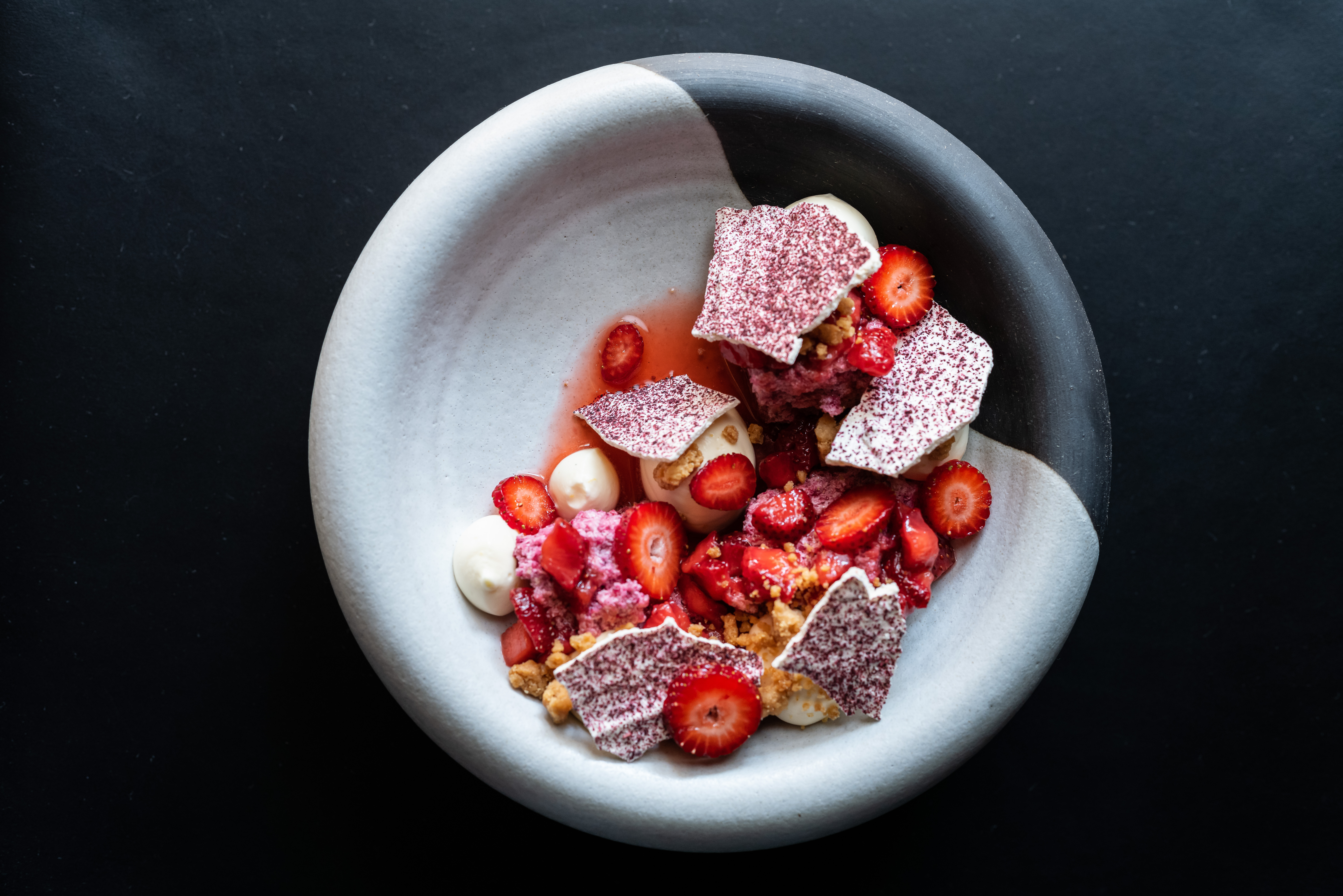
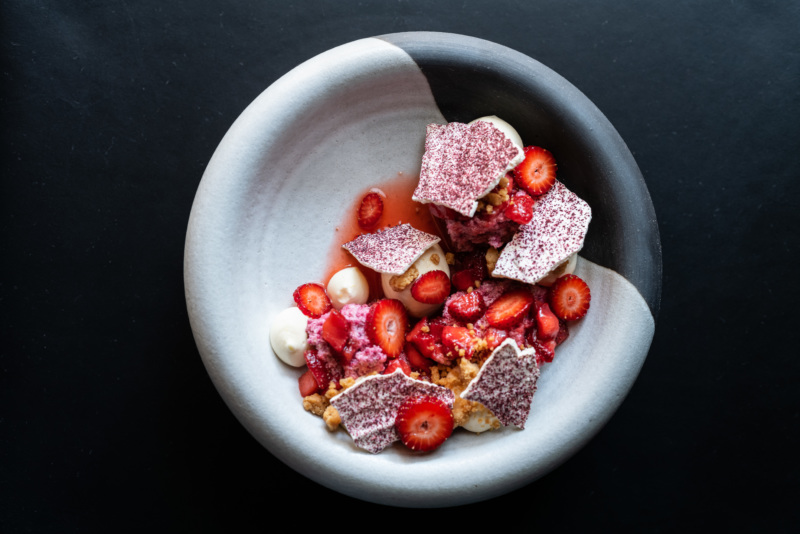
5. Plan on dinner even without the show.
While Patina was known for having pre-set menus for the theater crowd, with fixed courses that allowed guests to get in and out quickly without missing curtain time, Garcia says Asterid won’t have that — at least at first. “We’re looking at creative ways to address the time crunch,” he says. “Maybe it’s a shorter menu, maybe it’s a cut-off point where we say you won’t be able to enjoy a full event if you order that. As we identify those times, we’ll have something offered so people can say they had an experience and not just a roll with butter.”
To have a built-in audience of theatergoers, museum-hoppers, and Frank Gehry-oglers is both a blessing and a challenge. “We don’t want to rely on having only those guests, or let that shape the entire identity of the restaurant,” Garcia says. “The goal is to be a restaurant that’s independently great and just happens to be at the base of the concert hall.”
Lesley Balla writes about restaurants, travel, wine, and more. You’ll find her work in publications including Los Angeles magazine, Angeleno, The Hollywood Reporter, and The Seattle Times. In a previous life she was the L.A. editor for Zagat and Eater. Follow her on Twitter and Instagram. Follow Resy, too.






